Intelligent IT delivery models:
As a service models increasingly popular with companies
Software as a service, infrastructure as a service, everything as a service: almost everything in IT is now available as a service model. This refers to business models in which software or hardware is no longer purchased, but “rented” as needed. German SMEs still keep a long distance from the words “rent” or “leasing” in the IT sector – but often without being aware of the many advantages. When it comes to pure software use, some providers leave no other choice: For example, Adobe no longer offers a purchase option for Photoshop, Illustrator and the like – but instead a Software as a Service subscription model. Office 365 from Microsoft is probably the best-known Software as a Service model. Here, users only pay for the packages they actually use for a fixed monthly amount.
But what do as-a-service models look like for hardware?
In principle, you can lease any type of IT hardware. You may already be familiar with the widely used rental models for copiers and printers in the office. It works the same way with notebooks, computers, monitors, and even mice and keyboards. One of the biggest advantages: you are always up to date with the latest technology. As a rule, notebooks and computers should be replaced after about 3 years, but the reality is different. But this is largely not due to financial hurdles, but to the sometimes incomplete documentation of where and which devices are actually used in the company. The larger corporate structures grow, the more complex it becomes for IT departments to maintain an overview. Clean documentation or asset management software can remedy this. As soon as devices have to be replaced or newly purchased, the big effort begins for the purchasing department: What is needed for which employee, which budgets are specified, which supplier has the best offer, and where can I find the right hardware at all? This is where the evolution of SaaS comes in: Workplace as a Service. With Workplace as a Service, the entire workplace procurement process is placed in the hands of an external service provider. In addition to hardware and software, WaaS providers also offer (optionally) various IT services, e.g. installation or configuration of the devices. WaaS models are also regarded as “all-in-one IT problem solvers”, since in most cases support (1st and 2nd level) and maintenance (updates, care) are also taken over by the provider. Combining WaaS models with an asset management tool, companies benefit from a fully comprehensive management package for internal IT.
In the pandemic, it has become clear that many companies have switched to more efficient and new IT operations. Federal and state legal pressure has almost forced companies to allow working from home (in jobs where it is possible). IT departments and their IT administrators had to act quickly to avoid slowing down operations. McKinsey found in its study that the increase in remote work meant 87% of the companies surveyed had to purchase more new equipment than usual in 2021. This increased the time and resources required for procurement many times over. The need for IT support has also increased. McKinsey reports that 90% of respondents use an external IT service provider in some way – but only a small proportion use full-managed services. In most cases, only partial areas are outsourced to external service providers. About half of all respondents indicated that their infrastructure management is managed off-site
A good Workplace as a Service model should be able to provide easy management, good and clear software, fast deployment, and high scalability. If you are also looking for an asset management tool, we recommend our Workplace Enterprise platform. We would be happy to show you our solution in a live demo appointment.


